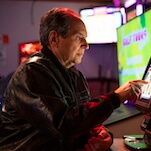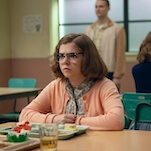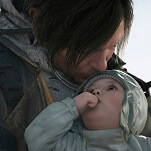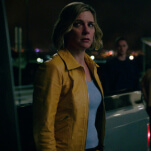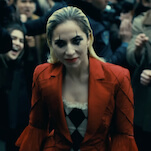The AI-Brained Sickos Who Upscale Anime To 60 FPS Need To Be Stopped, Now More Than Ever
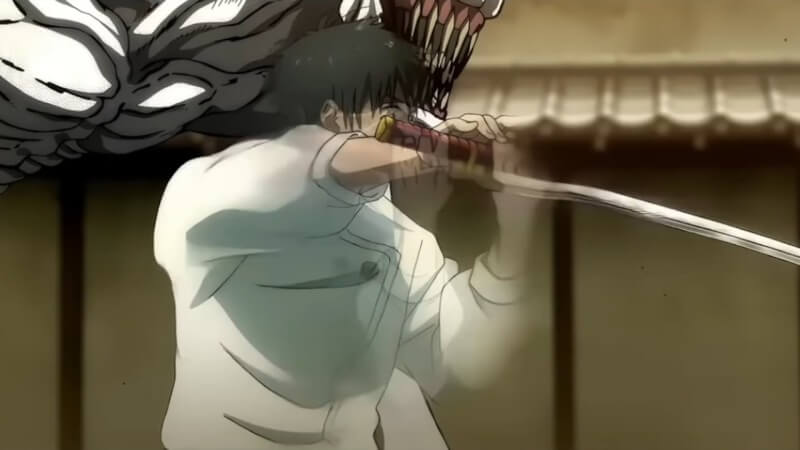
We’ve all been there. You’re eager to rewatch a clip from one of your favorite anime, whether it’s a catchy opening, an all-timer fight sequence, or a beautifully rendered moment of character development. You go to YouTube, type in a description, and without fully reading the title, click on what you assume is footage from the original source. But as you start watching, something is off.
You’re immediately barraged with a sense of the uncanny, like when you go to a Best Buy, look over at whatever blockbuster is playing on a giant 4K TV, and everything looks like a soap opera. You look down at the full title of the video, and it all makes sense: “4K + 60 fps.” The anime has been taken, shoved into frame interpolation technology, and spat out as a blurry 60 frames per second (FPS) nightmare with no sense of impact or timing.
The reason why the video being at 60 frames per second should set off an alarm bell is because very little animation outside of video games is created at this frame rate. 24 frames per second has been the standard for movies since time immemorial—just to be clear, this means that there are 24 images shown in sequence each second to create a sense of motion. While 24 FPS was originally born out of necessity in the early days of film, it has since become the standard for scripted programs, both movies and television.
However, when it comes to animation, 24 FPS is more of an upper limit rather than something maintained throughout. Part of this comes from animation being an inherently time-intensive process—if animators had to render everything at 24 FPS, they would be allowed even less time outside of their dungeon-like studios. Because of this, some common alternatives are to animate at 12 FPS (commonly referred to as “on twos,” as in you’re holding each frame for the place of two frames if it were running at 24 FPS), 8 FPS (“on threes”), and 6 FPS (“on fours”). Each of these frame rates has a different look, ranging from smoother to choppier.
While it’s tempting to assume that 24 FPS will always look “better,” the reality is that it’s all a matter of context: maybe a violent scene would benefit from brutal, choppy animation at 8 or 6 FPS. Or vice versa, a scene of people elegantly dancing could potentially come across better with a smoother 12 or 24 FPS. The point is that frame rate in animation isn’t flat or constant, but something that changes based on the needs of a scene.
By contrast, when you see a 60 FPS AI-upscaled video on YouTube, this wasn’t an artistic decision made by the creator, but one made by tech fetishists (probably gamers) who don’t understand that “more” doesn’t mean “better” in the context of animation. Specifically, they likely took the original video source and plugged it into frame interpolation software that utilizes artificial intelligence to generate additional frames, which are inserted between the original ones. Unsurprisingly, this basically always looks like garbage.
Instead of the frame rate changing to punctuate specific actions, it’s all smoothed out into a steady, lifeless tedium. On top of this, this software is rarely able to actually do its job properly; most frame interpolation tech is designed for live-action (where it also looks bad unless used for things like sporting events). When it attempts to generate frames, especially on animation with lower frame rates, it creates images with a gross, smudged look that’s a blurry mess (see the image at the top of the article). The animator Noodle has a great video on the subject that showcases several examples.
While you may assume that this horrible 60 FPS trend is something new, born out of the current AI (fool’s) gold rush, it actually predates ChatGPT. Looking back, it was all a bit prescient. These uploaders who viewed themselves as “upgrading” works of animation by running them through frame interpolators offered a peek at our shitty present that’s defined by an even more aggressive disregard for creators and art in general. You can draw a clear line between those “remastering” these videos and the ChatGPT obsessives who view themselves as “creating” when the extent of their work entails typing into a prompt that generates images from stolen work.

